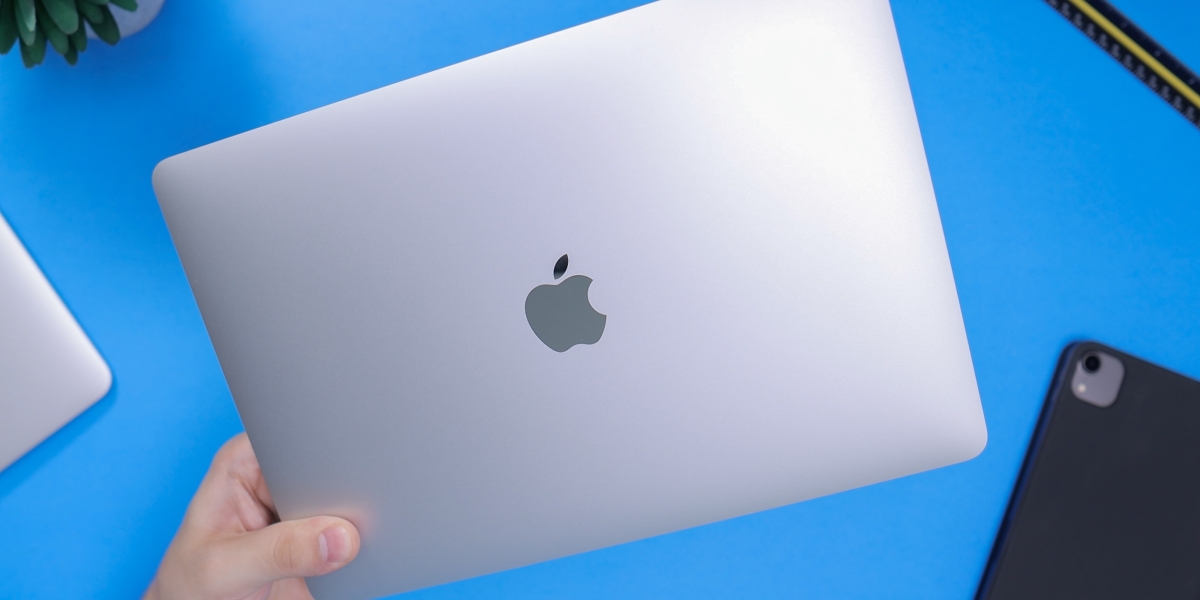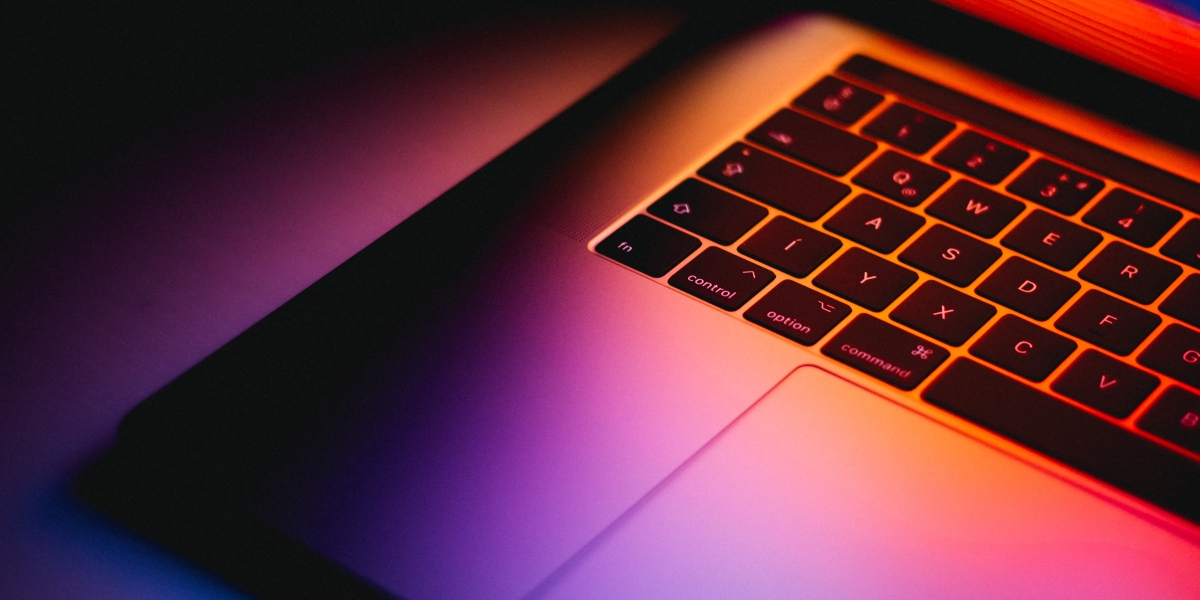Compelling and long-lasting battery life in one compact package
The new MacBook Air with Apple’s custom M1 chip mirrors the previous MacBook Air in appearance, but appearances can be misleading. The introduction of Apple’s ARM-based M1 CPU takes the lightest MacBook to new heights, even though the line saw no substantial physical overhauls for the late 2020 version.
The M1 MacBook Air is a fantastic machine with remarkable processing power and benchmark scores, whisper-quiet operation, and all-day battery life, all packed into a familiar lightweight form factor.
From a mobility viewpoint, the MacBook Air range has always been excellent, but they’ve always seemed more like a second laptop than something built especially for work. This is where the MacBook Pro comes in handy if you need to get some serious job done.
However, with the raw power of the M1 chip, I wondered whether Apple had truly shifted the paradigm. I spent approximately a week using the new MacBook Air as my main laptop, both at work and on the move, which allowed me to put that idea to the test.
Apple Silicon’s biggest flaw is that it prevents you from dual-booting Windows and prevents you from using apps and games that aren’t available for macOS. With this in mind, I set out to use the M1 MacBook Air for every non-Windows job I could think of, evaluating things like real-world performance and responsiveness, productivity, battery life, and even gaming performance.
Specs
- Product Name MacBook Air 13-inch (M1, 2020)
- Product Brand Apple
- UPC 194252048955
- Price $999.00
- Release Date November 2020
- Weight 2.8 lbs.
- Color Space Gray
- Warranty 1 year (limited)
- Platform macOS Big Sur
- Processor Apple M1 chip w/8-core CPU, 7-core GPU, 16-core Neural Engine
- RAM 8GB (optional 16GB)
- Storage 256GB (optional 512GB – 2TB)
- Camera 720p
- Battery Capacity 49.9 Watt-hour
- Ports 2x USB-C/Thunderbolt, Headphone
- Waterproof No
Design: Sleek, light, and unaltered

Apple made some significant changes between the last MacBook Air and this one, although none of them is visible. The MacBook Air (M1, 2020) has the same physical design as the 2019 model, so if you’ve seen one of them, you’ll know what you’re getting here. That’s a bit of a letdown because the laptop’s unchanged appearance and feel don’t quite reflect the revolutionary improvements to its internal machinery, but that doesn’t mean it’s terrible.
I’m not exaggerating when I say the physical design hasn’t altered. Despite significant improvements beneath the hood, the M1 MacBook Air’s size and weight remain the same as last year. It features the same thin profile, which is thinner in the front than in the rear, and the same Space Gray finish and reflective Apple logo on the lid. Like last year, the left edge has two USB-C/Thunderbolt ports, while the right edge has a single 3.5mm headphone jack. There are no extra ports or connections included.
The power situation is also unchanged from the previous model. You must use one of the USB-C/Thunderbolt ports to charge because there is no separate charging port. Most people will need to buy a USB-C hub with only two USB-C ports for their peripherals, video, power, and everything else. During my time with the M1 MacBook Air, I had no problems using a USB/HDMI/Ethernet/SD Card hub.
The full-size backlit keyboard is surrounded by dual speakers on each side and flanked by the same big trackpad as the previous generation when you open up the M1 MacBook Air. The keyboard is the same Magic Keyboard that transitioned from MacBook Pro to MacBook Air last year, and the scissor-switch keys work just as well as they did before. The 13-inch Retina display is likewise encased in the same hefty bezels as the previous generation above the keyboard.
It would have been wonderful to see modifications in some areas, such as more ports or a smaller bezel. Still, the MacBook Air already had a solid design, and Apple opted to focus on internals rather than outward design changes or major new features this year.
Display: Beautiful Retina display with a bit too chunky bezel
The display looks to be mostly unchanged from the previous generation. It has a stunning 13.3-inch Retina display with a native resolution of 2560×1600, 400 nits of brightness, and Apple’s patented True Tone function, which can adjust the colour temperature to better match the light in your environment. When exposed to daytime or intense fluorescent light, it will look bluer, whereas, at night, it will appear warmer and more orange.
The 2020 MacBook Air retains the same hefty bezels as its predecessor, owing to the panel’s size being intact from the 2019 model and the laptop’s proportions remaining unchanged. That isn’t a deal-breaker, but it does take away from the device’s premium feel, especially when compared to other laptops I’ve tested with far slimmer bezels.
The M1 MacBook Air’s display offers a broader colour spectrum, which is the most significant, if not the only, upgrade. It even has the same P3 wide colour gamut as the MacBook Pro. Most regular users won’t need this, but it’ll come in handy if you do a lot of photos or video editing. If you’ve historically needed a MacBook Pro for accurate colour work, this shift implies you might be able to save money by moving to a MacBook Air.
The M1 chip is an unstoppable beast in terms of performance
On paper, the M1 chip boasts some impressive numbers, and during the build-up to the introduction of the first M1 hardware, Apple made some big claims regarding enhanced performance.
Big Sur performs admirably, which is expected given that it was built specifically for the new M1 hardware. The navigation is fast and responsive, and the menus load rapidly. If you’ve become accustomed to looking at Apple’s famed spinning beachball, don’t hold your breath. Similarly, native M1 apps load and operate with the kind of snappy responsiveness you’d expect from a brand-new iPad Pro, and handling of older Intel Mac apps seemed relatively smooth when they all got Rosetta 2.
But before I get into the performance of the M1 MacBook Air, there are a few things I need to mention. Because the M1 chip is ARM-based, and Macs have been utilising Intel silicon for a long time, there’s a clear distinction between the current Mac hardware and the 2020 MacBook Air. You won’t be able to run Windows on this laptop, and you won’t be able to run old macOS apps natively either.
The new MacBook Air requires a translator called Rosetta 2 to run apps initially developed for Intel Macs. When you try to run an app that wasn’t built specifically for an M1 Mac, Big Sur asks you first to run Rosetta 2. If you say yes, the remainder of the procedure is smooth and unnoticeable.
The sole exception is the operating system itself, Windows. You used to use Bootcamp to dual boot Windows and macOS and run any Windows software on your Mac, but that’s no longer possible. Windows had already been tested on ARM devices, but it does not operate on Apple’s M1 hardware.
Returning to Rosetta 2, it performed admirably in my testing. I was able to run resource-intensive apps like Photoshop and Lightroom without issue, which is wonderful given that Adobe has yet to produce native M1 versions.
Despite Rosetta 2’s involvement to assure compatibility, both games worked flawlessly.
I conducted a couple of benchmark tests on the MacBook Air in addition to just using it naturally, and the results were predictably fantastic. First, I used 3DMark’s Wildlife Unlimited benchmark, which is technically meant for iOS.
It felt like a decent place to start because Big Sur and the M1 processor are intended to run iOS apps natively. The MacBook Air achieved a score of 16,272 and a frame rate of 97 frames per second in that test (fps). With just one more GPU core, the Mac mini achieved a slightly higher score of 17,930 and 107 frames per second.
I also downloaded GFXBench Metal and used it to do some benchmarks. First, I performed the Car Chase benchmark, a 3D game with sophisticated lighting and shaders that replicate a real-world situation.
The MacBook Air scored an impressive 60 frames per second in that benchmark, which would be fantastic if Car Chase were a real game rather than a benchmark. I also ran the T-Rex benchmark, which yielded a slightly higher score of 70 frames per second.
The M1 MacBook Air is a powerful little machine that’s more than suitable for both work and pleasure, based on benchmarks and experience. It remains to be seen if developers will embrace the new hardware as a gaming platform, given that macOS has traditionally been an afterthought in that regard. The M1 MacBook Air, on the other hand, is more than capable.
Big Sur, a comfy keyboard, and who needs a MacBook Pro?

The MacBook Air has never been marketed as a productivity computer, with professionals preferring the MacBook Pro. That line has never been blurrier than it is now, thanks to the new MacBook Air.
The M1 chips of the MacBook Pro and MacBook Air are essentially identical, with the Pro having an integrated 8-core GPU vs the Air’s 7-core GPU. Instead of the contentious Touch Bar seen on the Pro, the Magic Keyboard on the Air has physical function keys.
Aside from those changes, the MacBook Air does a reasonably good job of imitating the MacBook Pro. Apple has created an odd scenario in which many folks who would ordinarily choose a Pro don’t need it. I had no problems using my test unit for my everyday professional tasks, including researching, writing, and Photoshop picture editing.
The Magic Keyboard is a delight to use, and it hasn’t changed since the last Intel MacBook Air. I like the physical function keys, which have a comfortable amount of travel and are just clicky enough. The trackpad is also excellent. However, I like to use a mouse at my desk.
The only time I needed to use a Windows device was for after-work extracurricular activities. The majority of the games I’m presently playing don’t have a friendly macOS client, such as Final Fantasy XIV, or don’t work on macOS at all, such as Genshin Impact. The M1 MacBook Air has never failed me down in terms of sheer productivity. If you rely on apps or services that only work on Windows, your mileage will undoubtedly vary.
Audio: Stereo speakers with Dolby Atmos support produce fantastic sound.
The MacBook Air (M1, 2020) has the same excellent stereo speakers as the previous version, plus Dolby Atmos compatibility. These speakers are both loud and clear, framing the keyboard and shooting upward. They’re a bit heavy on the high end, but they sound excellent whether you’re listening to music, viewing YouTube videos, or watching Netflix movies.
When I opened YouTube Music in Safari and played Led Zeppelin’s “Immigrant Song,” I just needed to turn up the volume to approximately 50% to fill my little workplace with a pleasant listening experience. The speakers are louder than you’ll probably need when turned up. Still, they stay clear and free of distortion.
Wi-Fi 6 support offers excellent network performance.
The MacBook Air comes with an 802.11ax Wi-Fi 6 card that supports older 802.11a/b/g/n/ac and Bluetooth 5.0. It doesn’t have a wired Ethernet port, but if you have the proper adaptor, you can connect to a wired internet connection via one of the Thunderbolt connections. I did so, and it went off without a hitch.
During my time with the MacBook Air, I had no problems with networking, whether I was utilising a cable or wireless connection. With both types of connections, connectivity was rock solid, and I had solid download and upload speeds that were in line with what I expected from my internet connection.
To test the M1 MacBook Air’s network connectivity, I first plugged in a USB-C/Thunderbolt hub and connected it through Ethernet to my Mediacom gigabit cable internet connection. My download speed at the modem was just shy of 1Gbps at the time of testing. Using the Ookla Speedtest app, the MacBook Air achieved impressive speeds of 931Mbps down and 62Mbps up.
I tested wifi speeds by connecting the MacBook Air to my Eero mesh Wi-Fi system at various distances and places. I recorded a peak download speed of 390Mbps when tested in close proximity to the router. Then I tried again from approximately 30 feet away, and I got a maximum speed of 340Mbps. Even when the signal was blocked by walls and appliances 50 feet away, the MacBook Air still managed to reach 290Mbps.
Camera: A mediocre 720p webcam.
The M1 MacBook Air is a fantastic machine, but the fact that it still has a 720p webcam is a surprise. This is the same camera that was in the previous year’s model. Surprisingly, it’s the same camera that comes with the considerably more costly M1 MacBook Pro. Apple thinks it’s good enough, even though it isn’t.
While the hardware hasn’t been changed, the M1 chip does some heavy labour behind the scenes to give somewhat better performance. As a result, the prior version had less noise, a wider dynamic range, and better white balance. The bad news is that, while it’s technically better owing to enhanced post-processing, it’s still not a particularly good camera, especially when compared to rival laptops that come with a 1080p webcam.
The camera is adequate for video chats, but you won’t wow anyone with a razor-sharp image or vibrant colours. That’s about all you can do. Make sure your lighting is adequate.
Battery life is excellent owing to the M1 chip’s performance.

Reduced power consumption relative to Intel chips is one of Apple Silicon’s standout advantages, which leads to longer battery life. In the run-up to the debut of the M1 MacBook Air, Apple made huge boasts about an all-day battery, and they delivered.
I looped YouTube videos in Safari and let the MacBook Air alone put it to the test. The battery took nearly 12 hours to drain under those conditions. Your mileage may vary depending on your usage, and certain apps consume more power than others, but the M1 MacBook Air is designed to last all day.
Big Sur and the typical suspects in terms of software
Big Sur, the latest and best version of macOS, and the rest of the usual suspects are included with the M1 MacBook Air. Big Sur was designed from the ground up with the M1 chip in mind, while old classics like Safari have been rewritten to operate natively on the new hardware. Apart from that, you can run a large range of iOS applications, and Rosetta 2 lets you run almost any legacy Intel Mac software you desire.
Both of the software issues on the new MacBook Air are related to the move to Apple Silicon, which I’ve already addressed to various degrees. The first is that you can’t run Windows on an M1 Mac, and the second is that developers will need some time to embrace the M1 architecture.
Although the Windows bug only affects a small number of individuals, it is a major concern for those who are impacted. Because you can’t install Windows on an M1 Mac, you’re effectively shut off from using native Windows apps.
Emulation is also now unavailable. However, Parallels has said that a solution is on the way. Another option, in the shape of an ARM version of Windows, another option may be on the way in the future, but neither is on the table right now.
For the time being, if you need Windows for work or gaming, you’ll have to stick with your old Intel Mac or split your time between the M1 MacBook Air and a specialised Intel device.
It will take time for third-party developers to create apps, mainly for M1 Macs. And, until your favourite app receives the native M1 treatment, I was impressed by Rosetta 2’s ability to get legacy apps up and running. Some take longer to start than others, but getting each app running on the M1 MacBook Air is a one-time task.
Price: Expensive compared to the previous model.
With an MSRP of $999 for the base model, the MacBook Air (M1, 2020) is a little more costly than the previous generation of the hardware. That’s roughly $100 more than the base configuration of the 2019 model, which seems odd given that Apple went in the opposite direction with the M1 Mac mini’s cost.
Despite the price increase, the M1 MacBook Air’s features make it a worthwhile buy. If you require Windows, you’ll need both a MacBook Air and a spare computer to get by, but anyone who can live purely in the macOS ecosystem will find this notebook to be a fantastic value.
Pros And Cons
Pros
- Fantastic performance
- Runs Intel apps well with Rosetta 2
- Native apps run even better
- Comfortable keyboard
- Beautiful Retina display
- Excellent battery life
Cons
- Not a lot of ports
- Webcam still 720p
- Overall design unchanged
The Final Verdict
Apple Silicon is explicitly designed for mobile performance.
The 2020 MacBook Air blows away the competition with the M1 processor beneath its hood, delivering unbelievable benchmarks and silky smooth real-world performance. You can get a more affordable ultraportable with additional ports if you’re prepared to sacrifice performance and battery life. If you don’t mind not running Windows programmes via Bootcamp, the M1 MacBook Air is a must-have.
yehiweb
Related posts
New Articles
How to Offload Unused Apps on iPhone or iPad
Have you ever found yourself scrolling through the home screens of your iPhone or iPad only to discover apps you…


